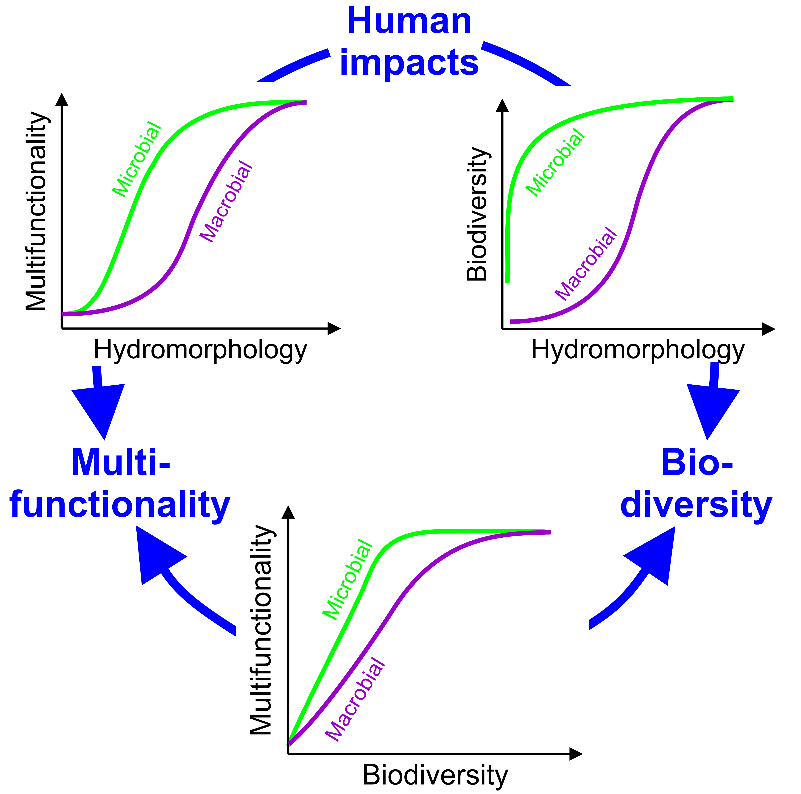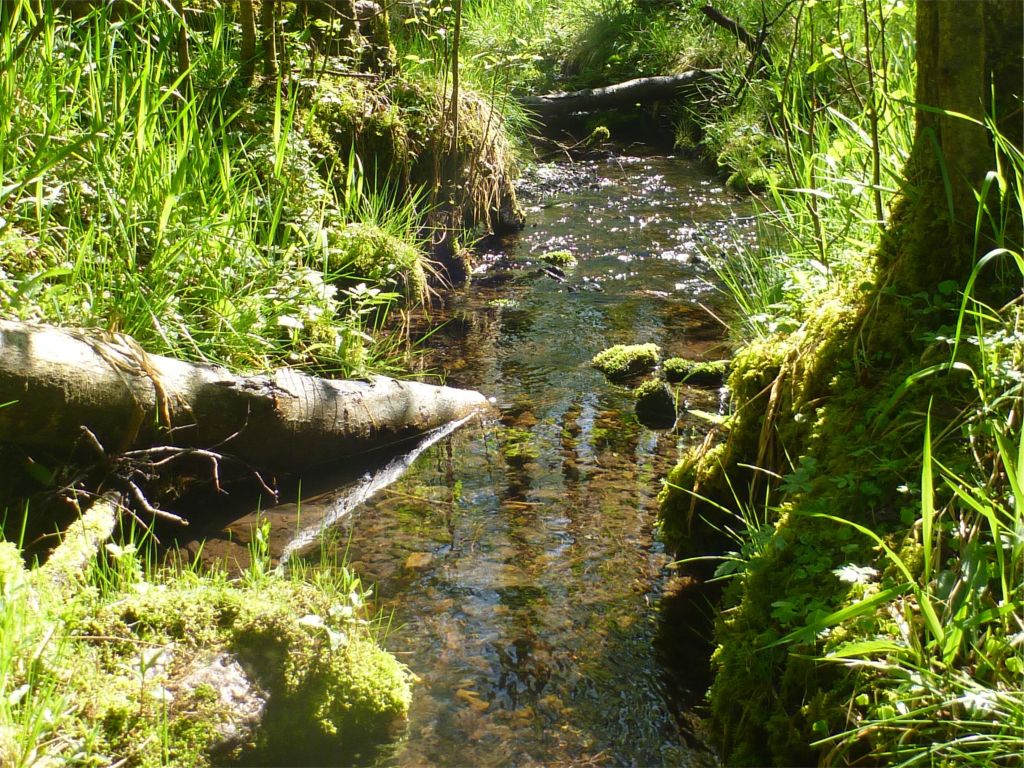BIOFUN: Biodiversity and ecological multi-functionality in aquatic ecosystems under human impact
Platform Project – PP2.6
The biodiversity of streams and rivers is lost at unprecedented rates but whether species extinctions are responsible for altered ecosystem functioning is unknown. Thorough knowledge of the functional role of micro-and macroorganisms for ecosystem functioning is needed if we are to assess and restore the adverse effects of human activities.
Background and scientific challenges
Increasing human impacts on freshwater ecosystems will accelerate the rate of species extinctions and declines of biodiversity globally. Such losses may impair the functioning of ecosystems and the provision of goods and services that humans rely on. Despite a rich body of theoretical concepts relating biodiversity to ecosystem functioning (BEF), empirical knowledge on BEF in freshwater ecosystems is at best equivocal. This limitation stems from the fact that BEF were mostly studied for macroorganisms, while microbial communities as important mediators of ecosystem functions have not been studied. Consequently, the functional role of species and the implications of their extinction for freshwater ecosystem functioning remains unclear.
Aims
BIOFUN develops and implements a novel framework that links biodiversity to organic matter cycling in food webs. The research is guided by the question of how losing (degradation) or gaining physical heterogeneity (restoration) affects species and communities, their functional role and thus the functioning of the whole ecosystem. Our primary functional measure is the efficiency at which consumers control ecosystem productivity. This measure allows us to quantify functional thresholds at which resource production escapes consumer control and delineates the transition where streams may shift from a desired state (e.g., heterotrophy) to an undesired state (e.g., eutrophication).

(Graphic: Mario Brauns, UFZ)
Contents and envisioned outcome
Most of our work is centred in third-party-funded projects (SFB Resist, RESTOLINK) and involves a significant field component, including large-scale studies and mesocosm experiments to decipher the role of hydromorphology in determining diversity-function relationships. Moreover, we synthesise the responses of ecosystem functioning to globally pervasive human stressors. In doing so, we produce a novel concept to quantify the multifunctionality of streams and provide recommendations on indicators to assess the functional status of ecosystems.


